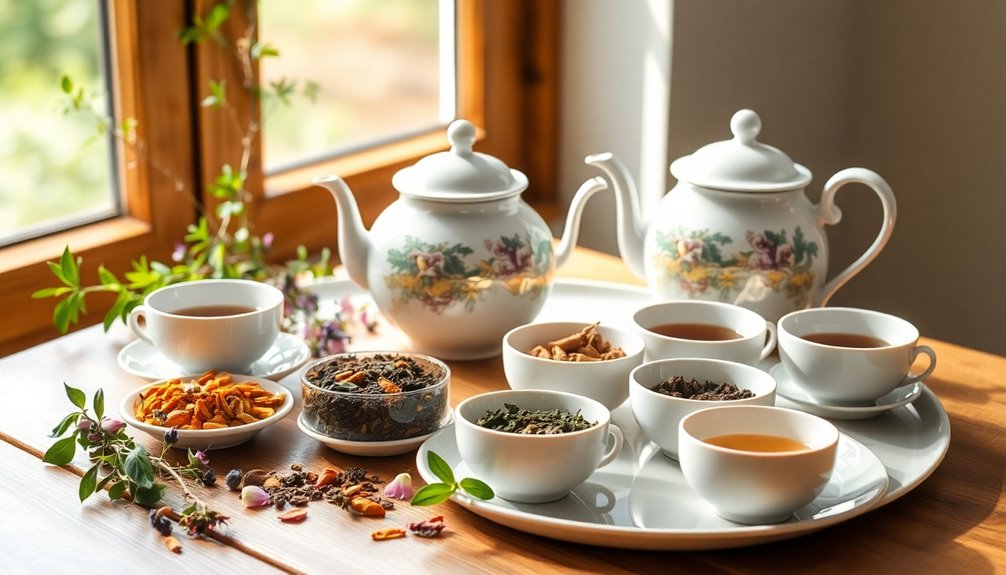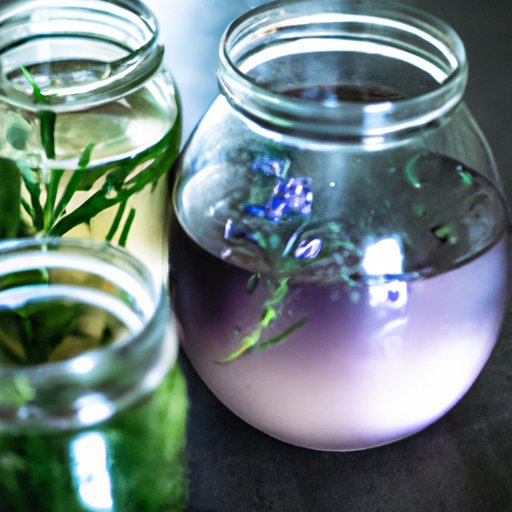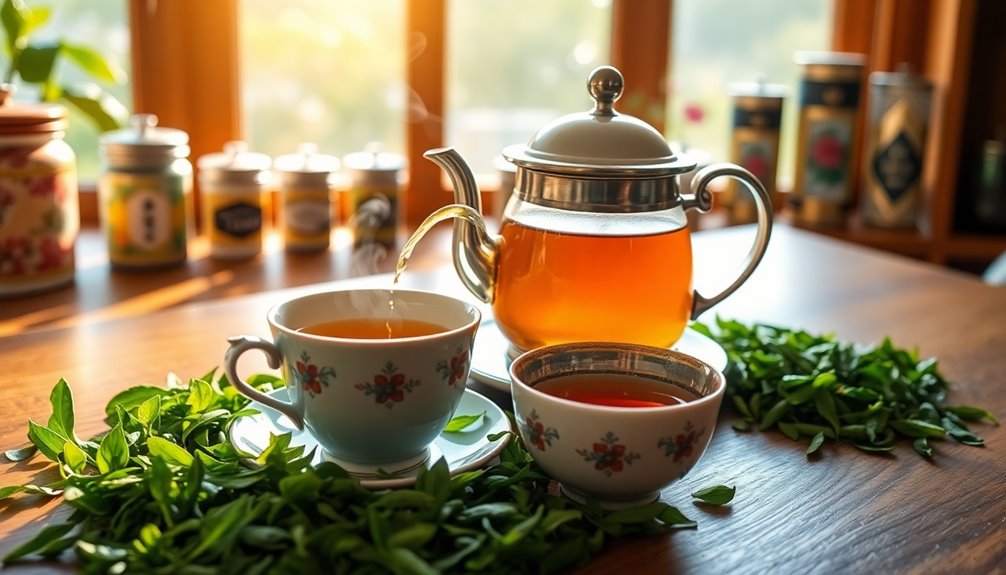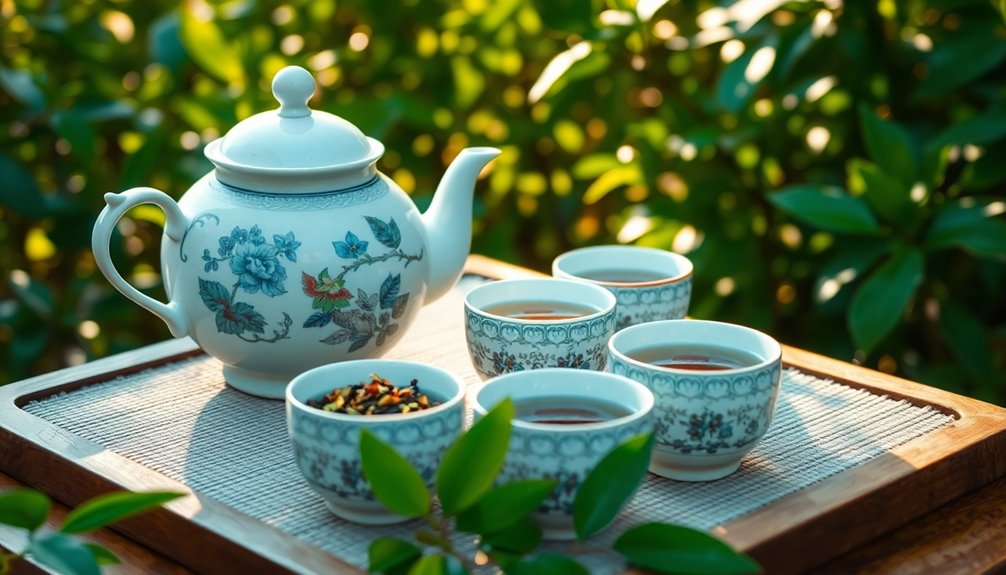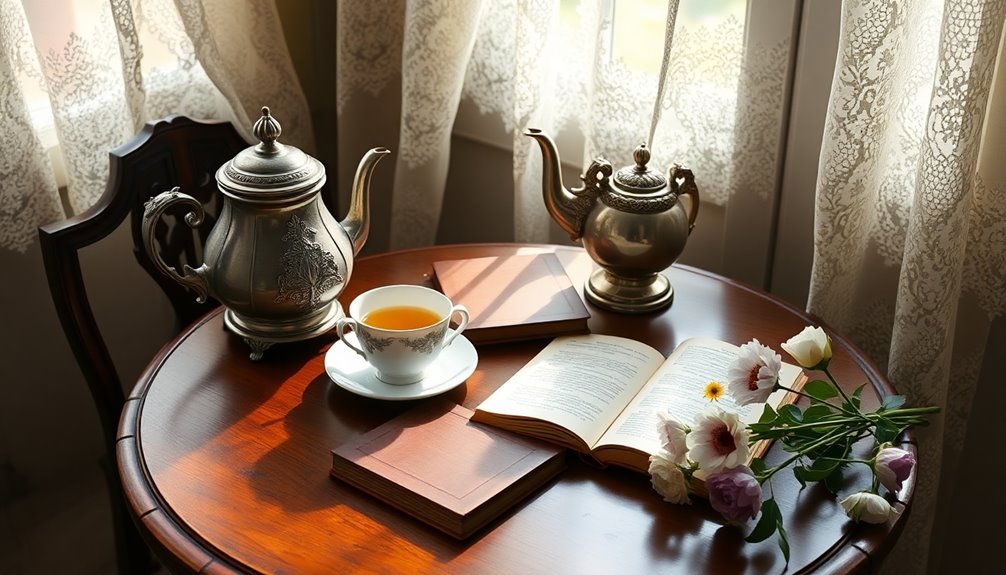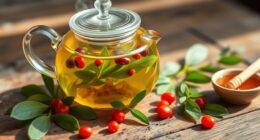From brewing tips to cultural rituals, the best tea guides can transform your experience. Start with quality water to enhance those natural flavors. Pay attention to temperature and steeping time—each tea type sings at specific conditions. You’ll find that engaging in tea rituals offers mindfulness and strengthens social bonds. Explore the health benefits, like stress reduction and hydration, while you savor each sip. By connecting with the art of tea preparation, you invite a deeper sense of presence into your life. If you’re curious about how these elements intertwine, there’s much more to uncover.
Key Takeaways
- Use fresh, filtered water with neutral pH to enhance tea flavors and avoid unwanted metallic or mineral tastes.
- Brew green tea at 175-185°F for 2-3 minutes; black tea should be brewed at 205-212°F for 5-7 minutes.
- Embrace cultural tea rituals as a mindful practice that fosters social connections and enriches the tea experience.
- Enjoy the health benefits of tea, including hydration, antioxidants for heart health, and stress reduction through mindful brewing.
- Engage in reflection and savoring during tea preparation to enhance relaxation and deepen your connection to the experience.
Introduction
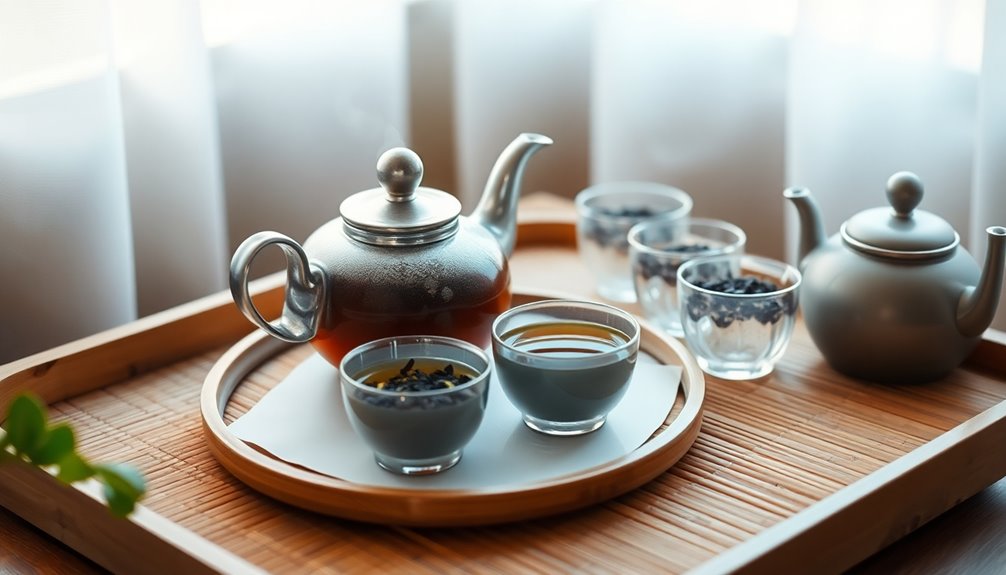
In your journey into the world of tea, understanding the basics can transform your experience from ordinary to extraordinary. The quality of water you use is crucial; fresh, filtered water enhances the natural flavors of tea, ensuring you avoid any metallic or mineral tastes that could ruin your cup.
When it comes to brewing techniques, knowing the right temperature and steeping time for different types of tea can significantly affect flavor and overall enjoyment.
Opting for loose-leaf tea over tea bags not only offers superior quality and flavor retention but also makes your tea experience more environmentally friendly by reducing packaging waste. Engaging in tea rituals can promote mindfulness, allowing you to slow down and appreciate each moment.
It’s an experience that tea experts often emphasize for its health benefits, as savoring tea can be both a physical and mental retreat.
As you explore various tea types, you’ll find that the journey is just as rich and rewarding as the final cup. Embrace these basics, and you’ll discover a deeper appreciation for tea that goes beyond just drinking; it becomes a delightful ritual in your daily life.
Cultural Significance of Tea Rituals
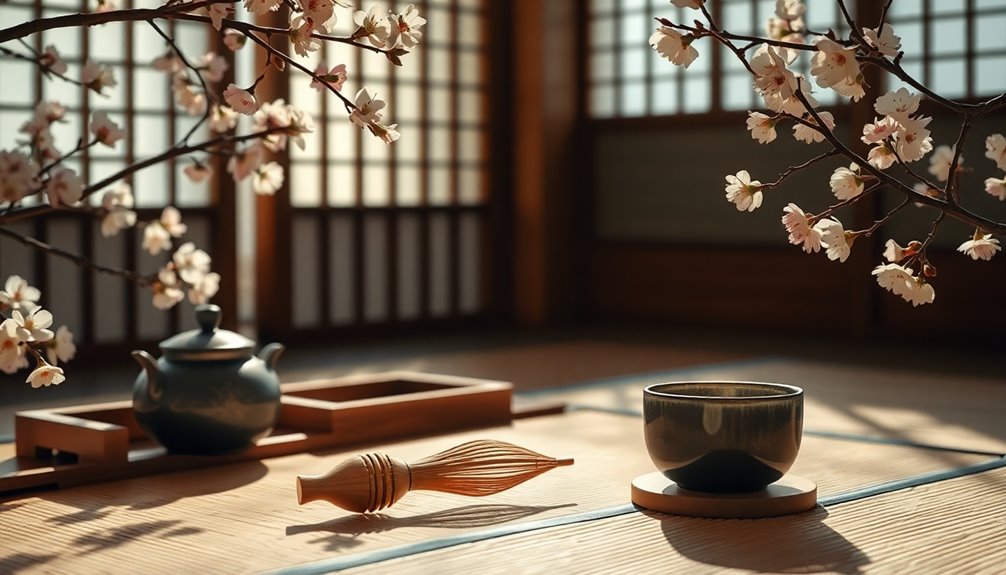
Tea rituals hold a special place in cultures around the world, embodying centuries of tradition and mindfulness. These practices transform tea drinking into a deeply enriching experience, where you savor each moment.
In East Asian cultures, for example, making tea is an art form. The meticulous attention to detail in brewing loose tea with spring water reflects aesthetic appreciation and enhances the overall experience.
Engaging in tea rituals isn’t just about the beverage; it’s also a social activity that fosters connections among family and friends. Specific cultural customs often accompany these rituals, making the act of enjoying your tea even more meaningful.
Historical practices, like the use of tea pets in Chinese tea culture, showcase how rituals can deepen your personal connection to tea.
Moreover, tea rituals serve as a form of meditation, helping you regain focus and presence in your daily life. By participating in these traditions, you embrace the beauty of tea leaves and the calming process of preparation.
Health Benefits of Tea Rituals
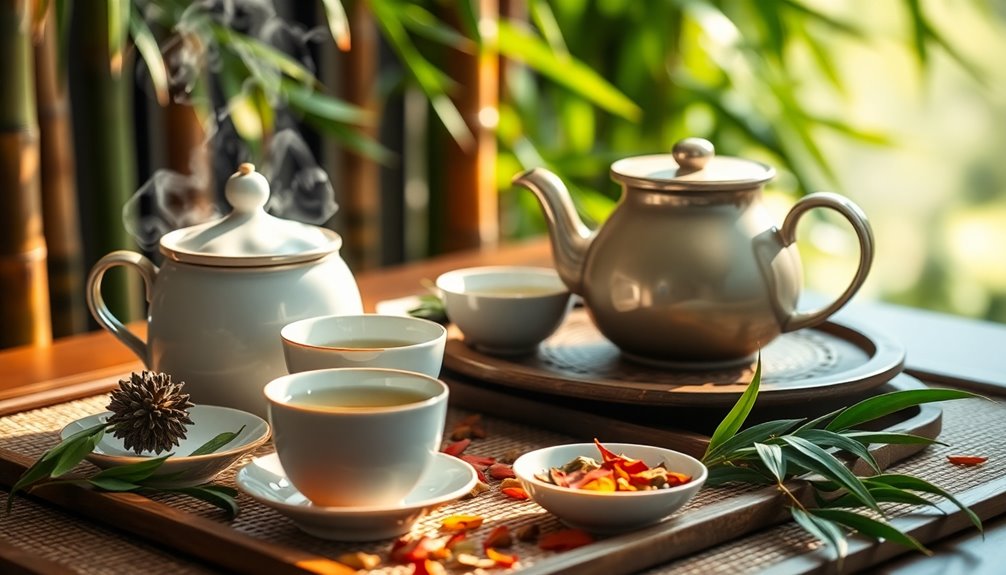
Participating in tea rituals not only enriches your cultural experience but also brings a host of health benefits. Engaging in these rituals promotes mindfulness, allowing you to focus on the present moment, which can significantly reduce stress and anxiety levels. Additionally, consuming herbal teas like chamomile and ginger can provide natural relief during stressful times. Brewing methods, such as proper steeping times, can further enhance the therapeutic effects of tea.
By incorporating tea into your daily routine, you enhance your hydration, a key factor in overall health and weight management, as tea is a low-calorie beverage.
Moreover, the antioxidants found in tea support cardiovascular health, helping to lower blood pressure and reduce cholesterol levels. This makes tea not just a comforting drink but also a heart-healthy choice.
You’ll also find that these rituals can improve cognitive function and concentration, boosting your productivity and creativity during tasks like writing or studying.
Lastly, don’t underestimate the social connections fostered by tea drinking. Sharing a cup with friends or family enhances emotional well-being, reducing feelings of isolation. Additionally, different types of tea, such as green tea, offer unique health benefits, further enriching the tea ritual experience.
Tea as Mindfulness Practice

Embracing the ritual of tea brewing can transform your daily routine into a mindful practice. When you prepare your tea, take a moment to focus on the loose tea leaves, appreciating their texture and aroma. Use filtered water for the best flavor, and understand how to make the perfect cup by paying attention to steeping times. This intentionality encourages you to slow down and engage fully with the process.
As you brew, practice breath awareness. Inhale deeply, and let your breath guide you through each step, from measuring the leaves to pouring the hot water. This short meditation fosters a deeper connection with yourself and your surroundings, enhancing your overall experience.
While you wait for your tea to steep, let your mind clear. Use this time to reflect and regain focus, especially during creative tasks like writing.
When it’s time to enjoy your tea, savor each sip mindfully, allowing the warmth to envelop you. This ritual not only promotes relaxation but also supports better hydration and overall well-being.
Cultural Appropriation in Tea Practices
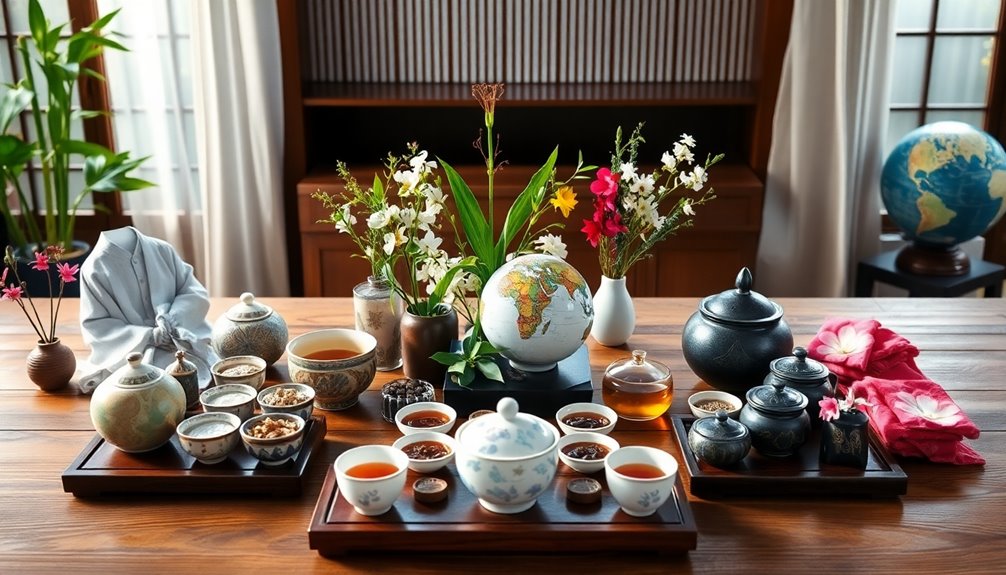
Cultural appropriation in tea practices is a nuanced issue that often goes unnoticed amidst the beverage’s global popularity. When you adopt elements from another culture’s tea rituals, like specific preparation methods or types of tea, it’s crucial to understand their historical significance.
For example, Japanese tea ceremonies and Chinese Gongfu tea brewing are steeped in rich traditions that deserve respect. Blending different tea practices can be enriching, but misrepresenting them risks commodifying these deeply rooted customs.
This commodification strips the rituals of their meaning, reducing them to mere trends or marketing tools. To truly appreciate tea, engage with its diverse heritage thoughtfully.
You can foster authentic experiences by learning about these practices in a respectful manner, seeking to collaborate and understand rather than appropriate. By acknowledging the nuances and values behind various tea rituals, you promote a more inclusive approach to enjoying tea.
This appreciation not only deepens your connection to the beverage but also honors the cultures from which these traditions originate, allowing you to savor tea with a greater sense of respect.
Practical Applications
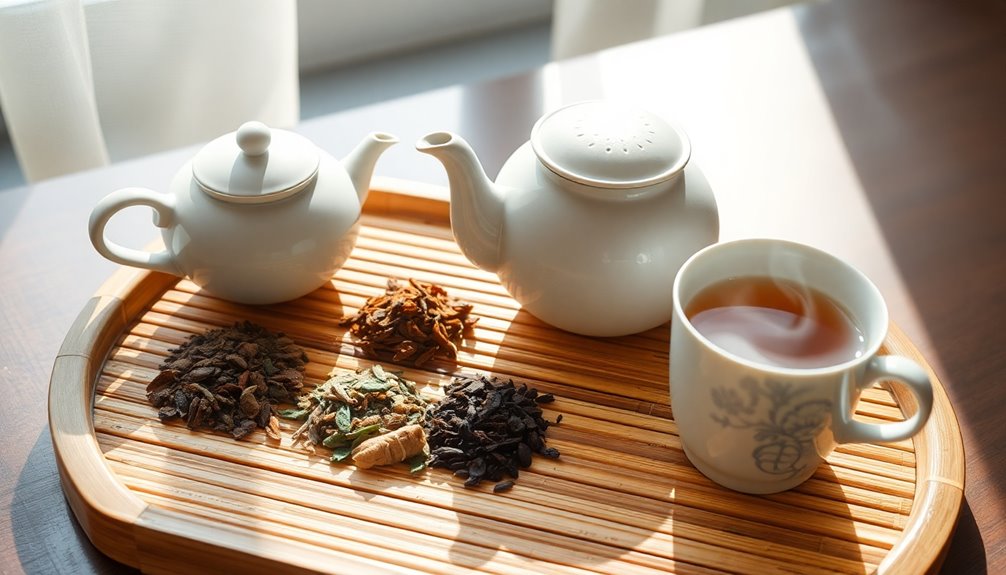
Tea offers a world of practical applications that can elevate your brewing experience. To get the most out of your loose-leaf tea, start by using fresh, filtered water with a neutral pH. The right amount of water and tea leaves is crucial for achieving optimal flavor.
For green teas, brew at a water temperature of 175-185°F (80-85°C) for 2-3 minutes. If you prefer black teas, aim for 205-212°F (96-100°C) and steep for 5-7 minutes. Paying attention to these details ensures you unlock each tea’s full potential.
Incorporate mindfulness into your tea ritual by focusing on the aroma and appearance of your brew. This enhances your sensory experience and promotes relaxation.
Additionally, exploring cultural significance can deepen your appreciation of tea. Try adding milk to your black tea like in the UK or infusing mint into your Moroccan tea. Each variation invites you to experience tea in a new light, broadening your understanding and enjoyment of this timeless beverage.
Conclusion
Incorporating tea rituals into your daily routine can enrich your life in many ways. By appreciating the cultural significance, embracing the health benefits, and using tea as a mindfulness practice, you can create a deeper connection to this ancient beverage. Just remember to be respectful of the traditions you explore, avoiding cultural appropriation. So, whether you’re brewing a calming cup or sharing a moment with friends, let tea become a cherished part of your journey.

